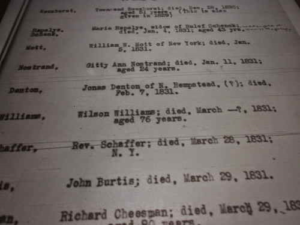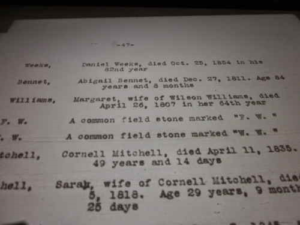Originally published on genealogyatheart.blogspot.com on 3 Jun 2015.
It’s officially Hurricane Season (June 1st-November 30th) and I’m predicting several storms. My rationale for the prediction is from observation and experience. May was hotter than usual and the summer rain pattern began early this year. By rain pattern, I mean the afternoon thunderstorms that drench the Tampa Bay region between noon and four daily, followed by a gentle Gulf breeze and sunshine for the rest of the day. The Gulf’s temperature is already hotter than in years when we didn’t have much hurricane activity, thus supporting my prediction. My husband hates hearing my last reason for a bad season but I stand by this – our daughter is moving back to the area. Every time she had signed up to take a medical school exam (MCAT, Step 1, Step 2, Step 3) there has been a hurricane – even when she had relocated to New Jersey. I can’t explain why she hits the hurricane jackpot every time she has to take an exam but she has two more coming up – mid August and early October so I’m preparing for the worst!
About a month ago, Genealogy Ninja Thomas MacEntee sent an email about a new Kindle E-Book he had just released called Preserving Your Family’s Oral History and Stories. He proposed the question, “How Safe is Your Family History?” and used the term “future proof” meaning making sure that your records will be available in the future. When I read this I immediately got a smug feeling – my family records and photos are all digitized. Most are public on Ancestry and privately held in Picassa. I have given copies on DVDs to several relatives around the US. The originals are kept in acid free sleeves in plastic storage bins on the highest shelf in the middle of my climate controlled home to insure against flood, wind, mold and water damage.
My smugness didn’t last long. Soon after reading the email I got a call from both my sister-in-law and daughter. Neither could find the DVD I had given them and they needed a picture. Turns out my son can’t find his copy, either. Sure, I could give them all another copy but what would happen if they again lose it or it malfunctions and something happens to me?
The next week I was sitting in my favorite chair, blogging away on my old laptop. A mosquito landed on my leg and I immediately slapped it. Not only did I miss the mosquito I had shifted in the chair and knocked the thumb drive into the armrest. I didn’t think much about it until several hours later when I tried to eject it. The device could not be found. I could find it – it was right in front of me sticking out of the laptop. Unfortunately, my computer could no longer read it because somehow it had snapped a connection inside the drive. I tried to remain calm thinking that I have most everything backed up to Dropbox except one file. Surely, it must still be somewhere on my hard drive. Nope, I hadn’t saved it because my laptop is old and I don’t trust it. I tried to go to recent documents but I guess I hadn’t opened it on the laptop recently so it wasn’t there. The next day my husband found the Excel document in my temp files. It wasn’t the most up-to-date version but it was much better than not having it all.
Okay, so DVDs get lost and thumb drives break, there are still clouds, right?! Well, only when they work. In mid-May a coworker asked to see a picture of the hydroponic garden that my son had built. I open my (not so) smart phone and couldn’t access the picture. Seems I had used up all my memory space somehow. I went from camera to gallery but still couldn’t access it. No worries, I thought, I have my photos sent to Picassa so I’ll just log on and find it. That’s when I discovered that you can’t view your photo in Picassa if your phone doesn’t upload it which mine didn’t do. Granted, this was not a major loss but it further lessened my smugness about my “future proofing” a tad more.
In the 3rd week of May I was visiting the Tampa Bay History Center to research Jose Marti’s visit to Tampa (see blog 14 May 2015 Marker Mistakes-Historical Plaque Inaccuracies) when I learned the center doesn’t have a printer or scanner for researchers’ use. I didn’t bring my digital camera, I wasn’t going to trust my new thumb drive, I couldn’t use my phone so I thought I was absolutely brilliant by taking photos of the pages with my Kindle. Well, I wasn’t so brilliant.
I got home late from work that night and was preparing for all day field trips with my students for the next two days so I didn’t take a look at the photos. I assumed they were going to go directly to Picassa. I know, I know, never assume in genealogy; someday I will get that lesson down. Three days after I had taken the photos I was holding my Kindle, purse, clipboards, travel mug, beach towel, and while getting out of the car, the Kindle slipped out of it’s sleeve and hit the garage floor. I noticed several hours later the Kindle screen was cracked. I also learned that my photos hadn’t been sent to Picassa because I had signed on to my Kindle with a different email address that Picassa didn’t recognize. I was able to keep rotating the device until I had the pics emailed from one address to another but it was a major pain in the neck after a long hot tiring day (and kudos to Amazon staff who were so nice about helping me save the photos AND sending me out a replacement Kindle 2 days later!) Well, by now I was no longer feeling secure about by ability to future proof my records.
To make me even further concerned, Eric Jelle, of Genedocs Templates on Facebook, posted this on Memorial Day Weekend: ” I would also like to take a moment to inform/remind members that both my grandfather and his father (Grandpa Richard) had their discharge paperwork burned and lost forever in the horrible fire in 1973 in St Louis at the National Personnel Records Center (NPRC). Before I even knew the fire happened or its 16 – 18 million military service document destroying impact, I had inherited the member copies of both Rays and Richards service info and then made color copies and sent them to NPRC after learning they had nothing on file. Of course, I went the extra mile and included service portraits of each too! IF you have these documents or end up with them – please send copies to NARA/NPRC which has a new fireproof facility in St Louis so you can rest easy they likely will not be easily burned again.” Fire! Don’t even want to think about that. I live in an area with lots of lightning which causes lots of fires. I got that nauseous feeling in the pit of my stomach reading his post.
I don’t want to sound paranoid but I’ve had too many tech issues in the past month not to be worried.
I guess it’s a miracle we find any documents today given all the things that can cause destruction. I’m hoping I’m wrong about the upcoming hurricane season and I’m hoping my work will be preserved.
The only solutions I can come up with is to make sure that our work is shared as much as possible and that both electronic and hard copies are made. I am making a point of saving my Ancestry tree to Legacy monthly and a copy is kept on my hard drive and in Dropbox. I have tried the Wiki Tree on Familysearch.org but I have some concerns about relying on it. First, its a Wiki and anyone can change what you input. That could be a positive if someone is correcting an incorrect entry but it can also be disastrous if someone is deleting your correct information. Second, maybe it’s me but I have a difficult time maneuvering on the site’s tree. Third, I have a large tree and don’t have time to input or click and select from the site’s choices to build. I spoke with a tech person when I was at the Family History Library in March and there is no option to upload a gedcom, old PAF or any other genealogical management program. So, Familysearch.org is not a viable alternative for me.
And now there’s the Ancestry rumors circulating again. I’m not overly concerned with their upcoming auction but one never knows what a new buyer will do. I never thought PAF would go away or Rootsweb would not have continued to grow.
I do absolutely love Ancestry’s new format (though I hate the drab background colors) that permits turning your ancestor’s timeline into a story. I’ve noticed some minor glitches but the edit feature allowed me to make corrections quickly and easily. I’m thinking of taking the stories and printing a family book for an additional safeguard against losing data. A hard copy could even be donated to a library or historical society even further insuring your hard work isn’t lost.
My last fail safe method to preserving our family tree is to further motivate family members who have shown an interest in genealogy as I would like them to continue on with the work that I began when I can no longer do so.
I’d appreciate hearing any preservation ideas you may have!

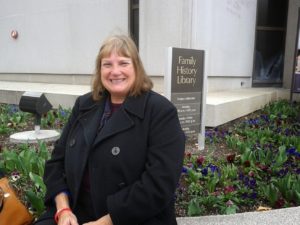

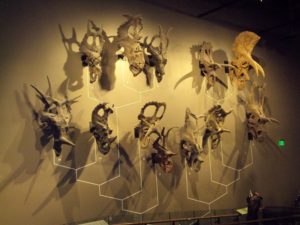



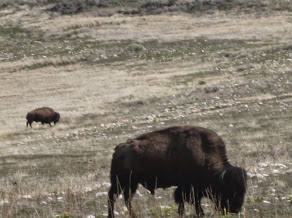
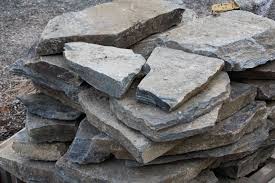 Sometimes in genealogy we get so consumed with the names, places, and dates of our ancestors that we overlook the details that tell us much about their character.
Sometimes in genealogy we get so consumed with the names, places, and dates of our ancestors that we overlook the details that tell us much about their character.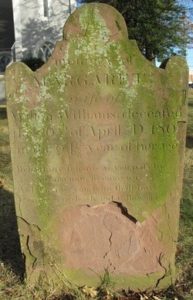 We know this is our Margaret because the death date, spouse’s name and her name match the church burial record of Frost’s transcription.
We know this is our Margaret because the death date, spouse’s name and her name match the church burial record of Frost’s transcription.
